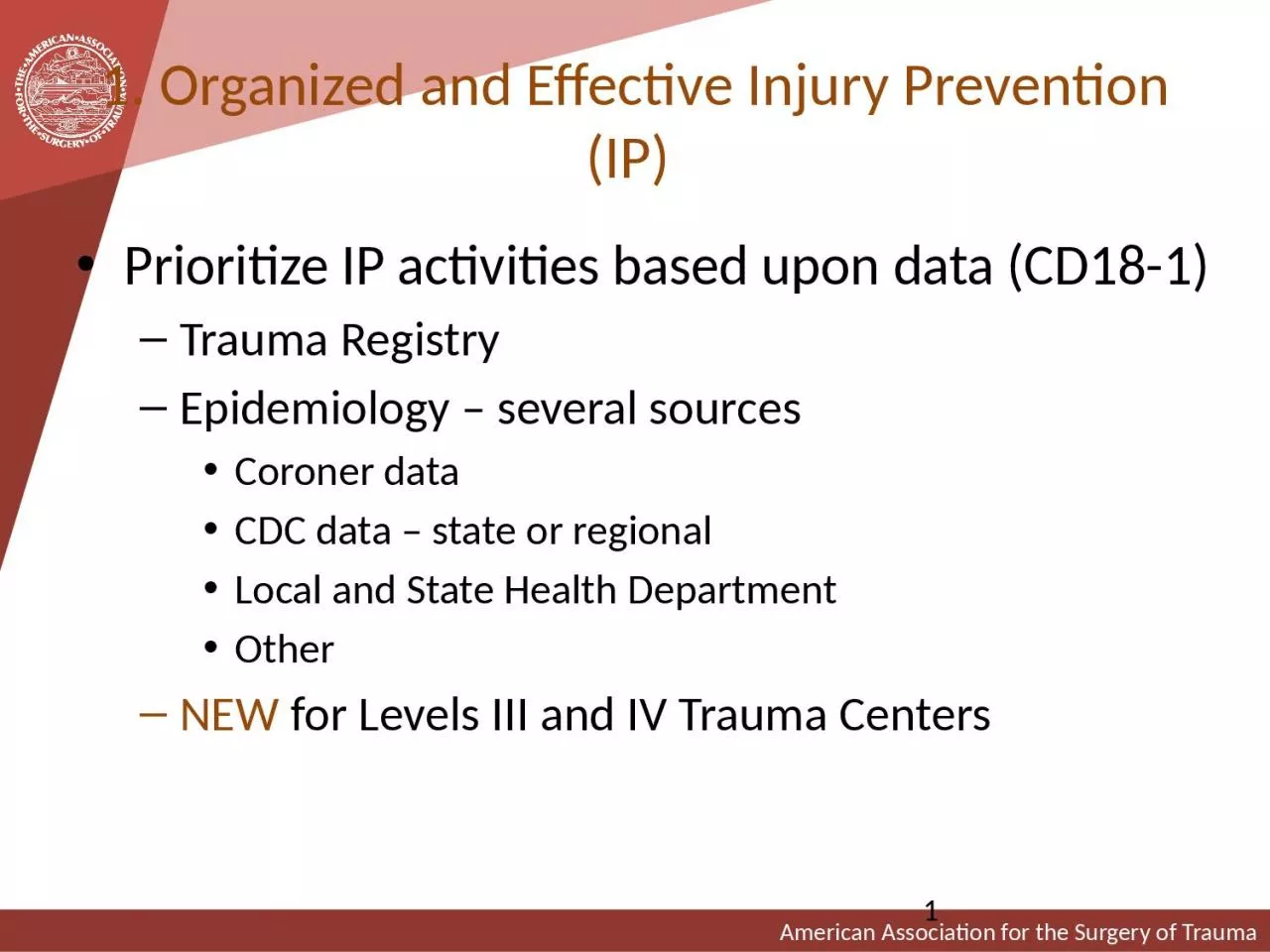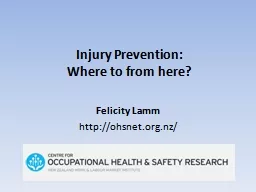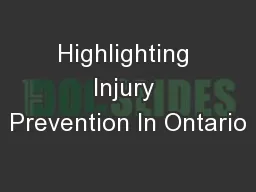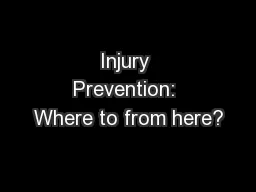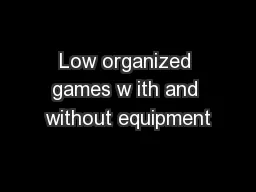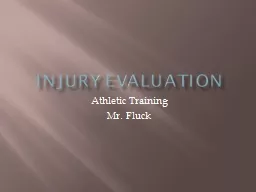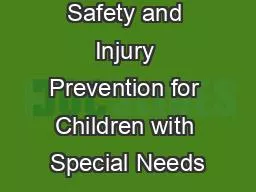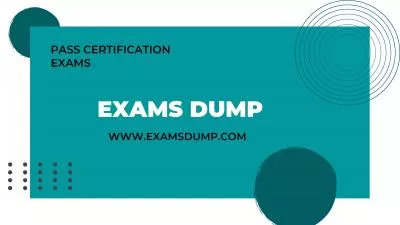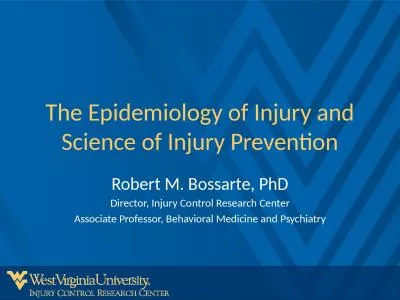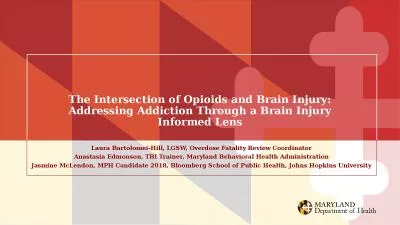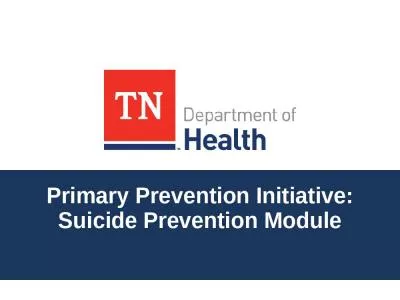PPT-1. Organized and Effective Injury Prevention (IP)
Author : elise | Published Date : 2022-06-08
Prioritize IP activities based upon data CD181 Trauma Registry Epidemiology several sources Coroner data CDC data state or regional Local and State Health Department
Presentation Embed Code
Download Presentation
Download Presentation The PPT/PDF document "1. Organized and Effective Injury Preven..." is the property of its rightful owner. Permission is granted to download and print the materials on this website for personal, non-commercial use only, and to display it on your personal computer provided you do not modify the materials and that you retain all copyright notices contained in the materials. By downloading content from our website, you accept the terms of this agreement.
1. Organized and Effective Injury Prevention (IP): Transcript
Download Rules Of Document
"1. Organized and Effective Injury Prevention (IP)"The content belongs to its owner. You may download and print it for personal use, without modification, and keep all copyright notices. By downloading, you agree to these terms.
Related Documents

